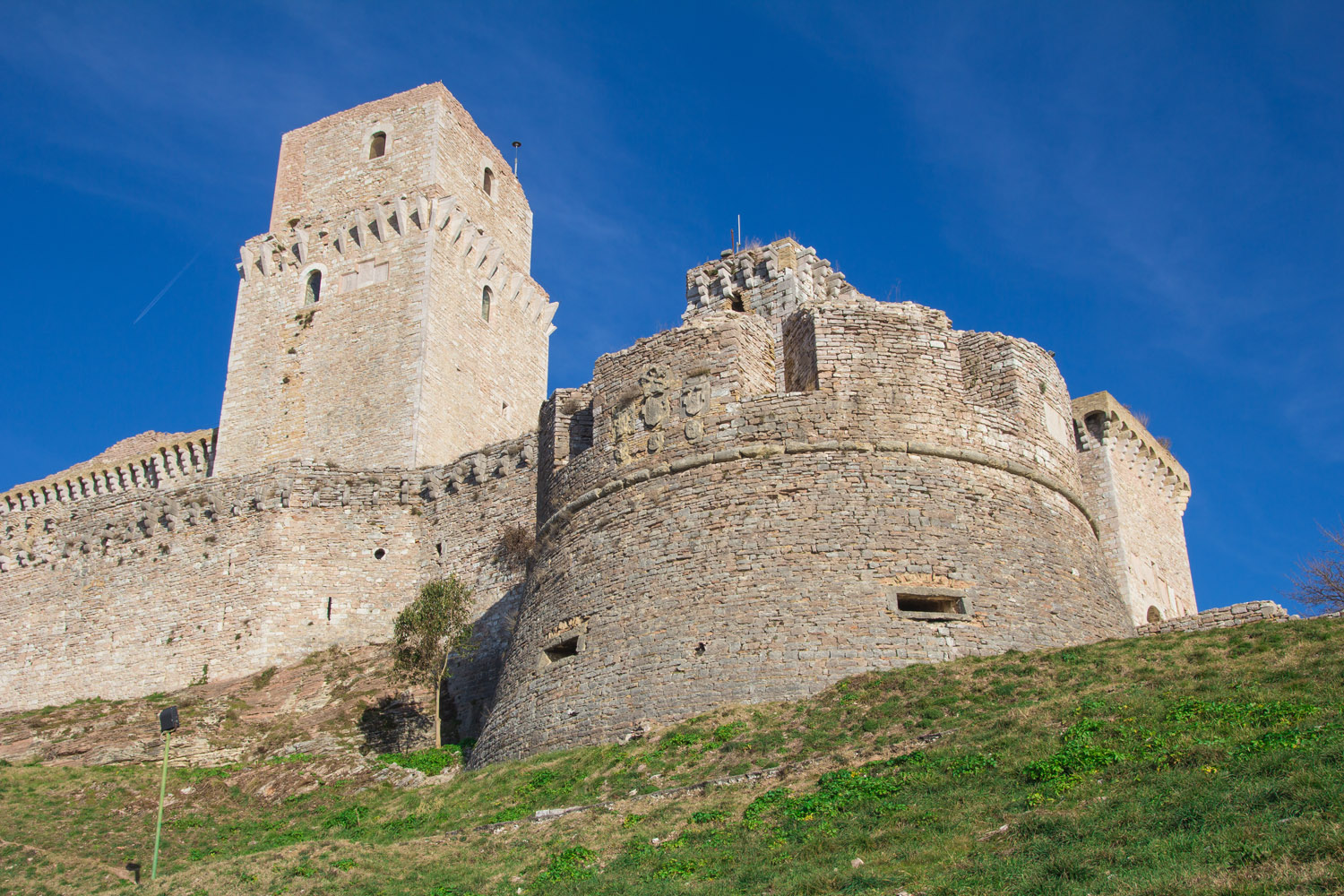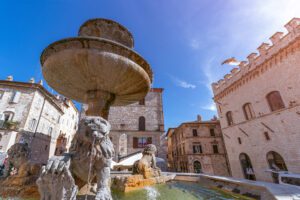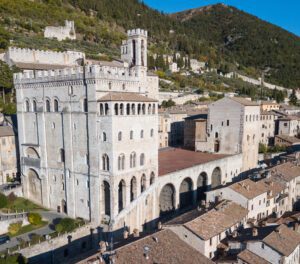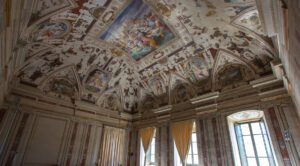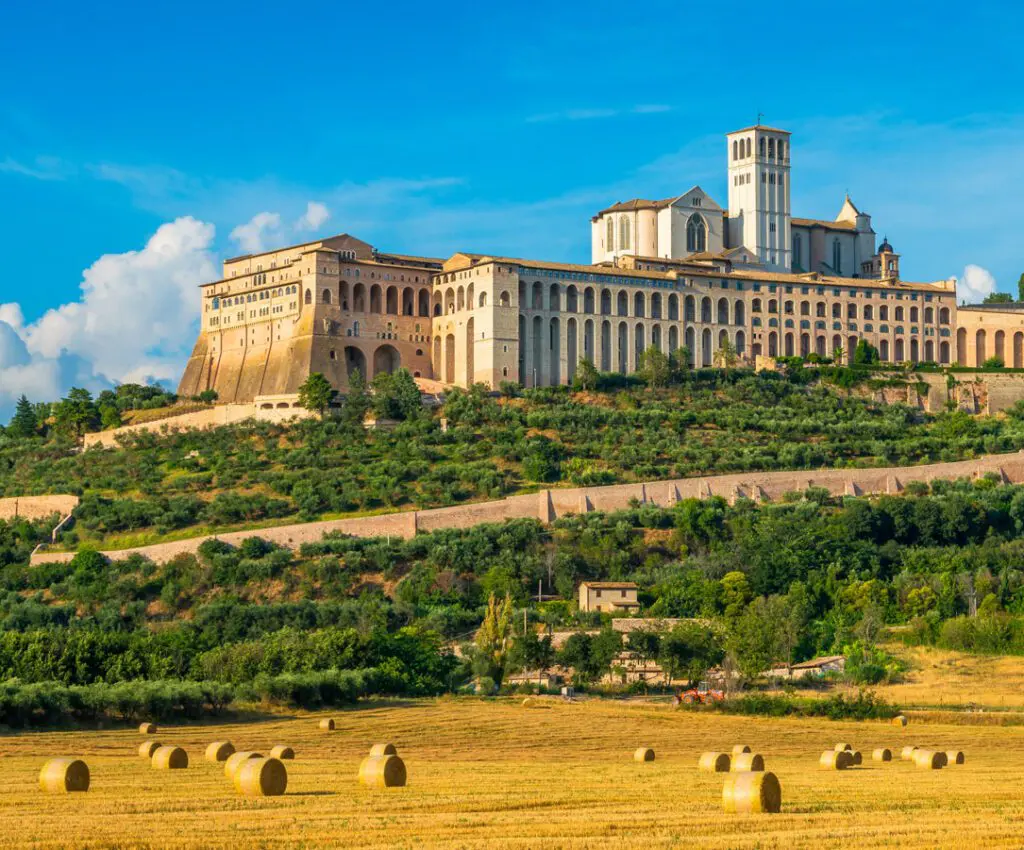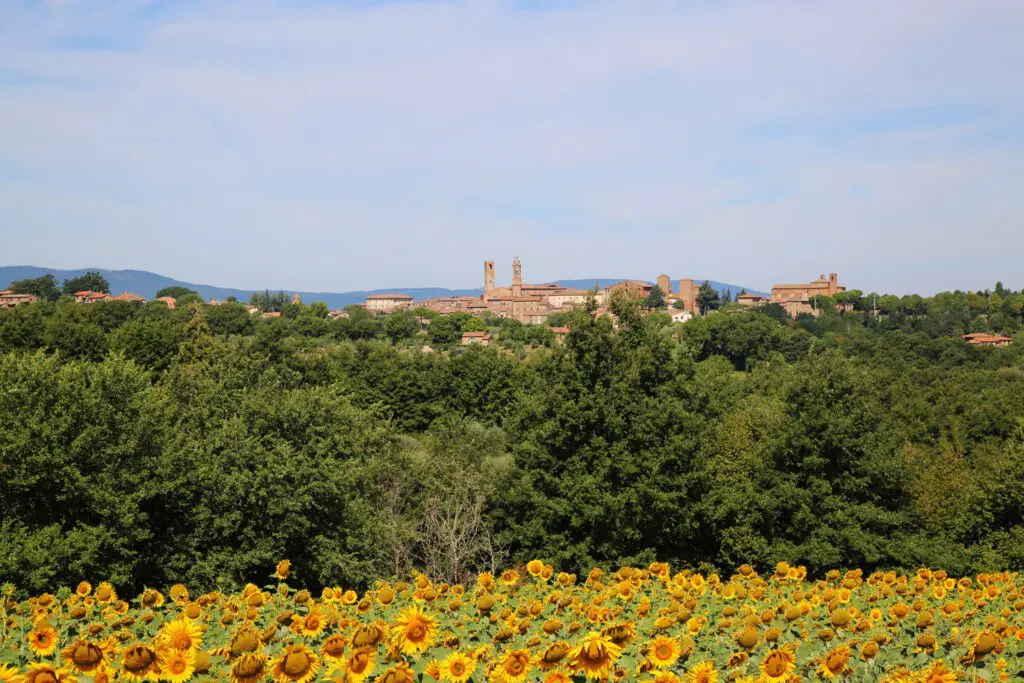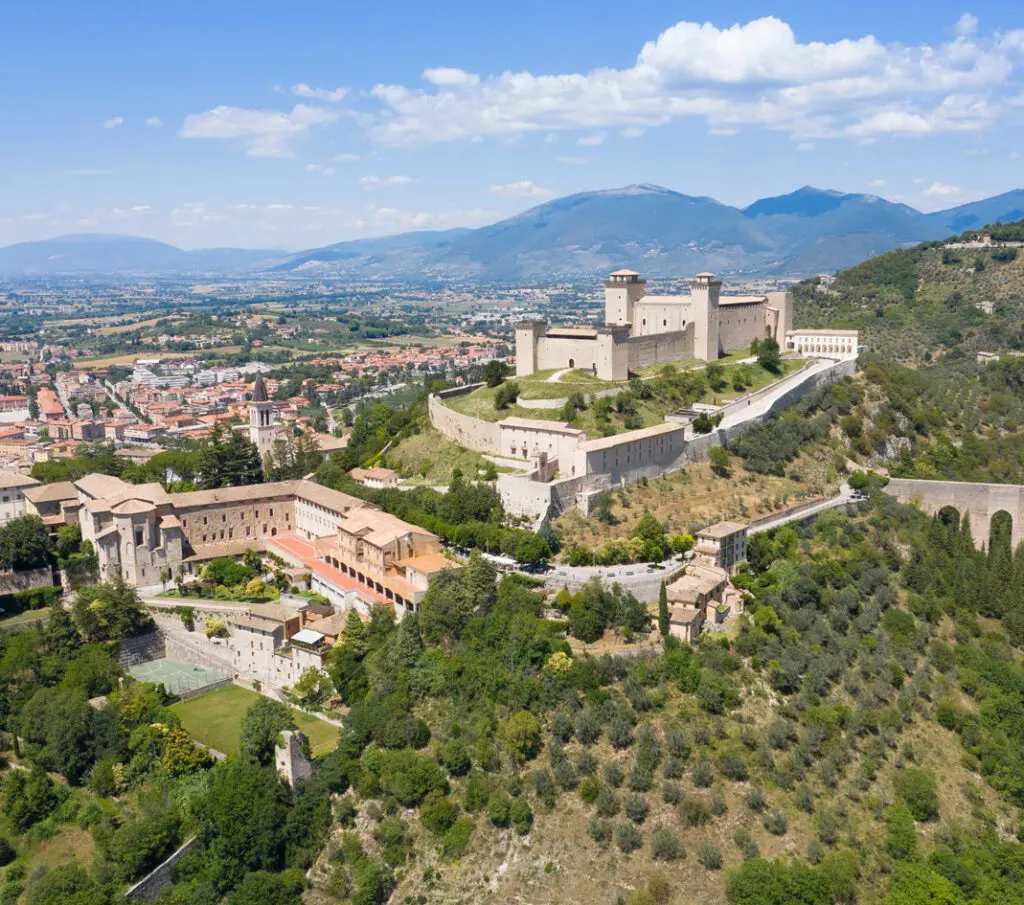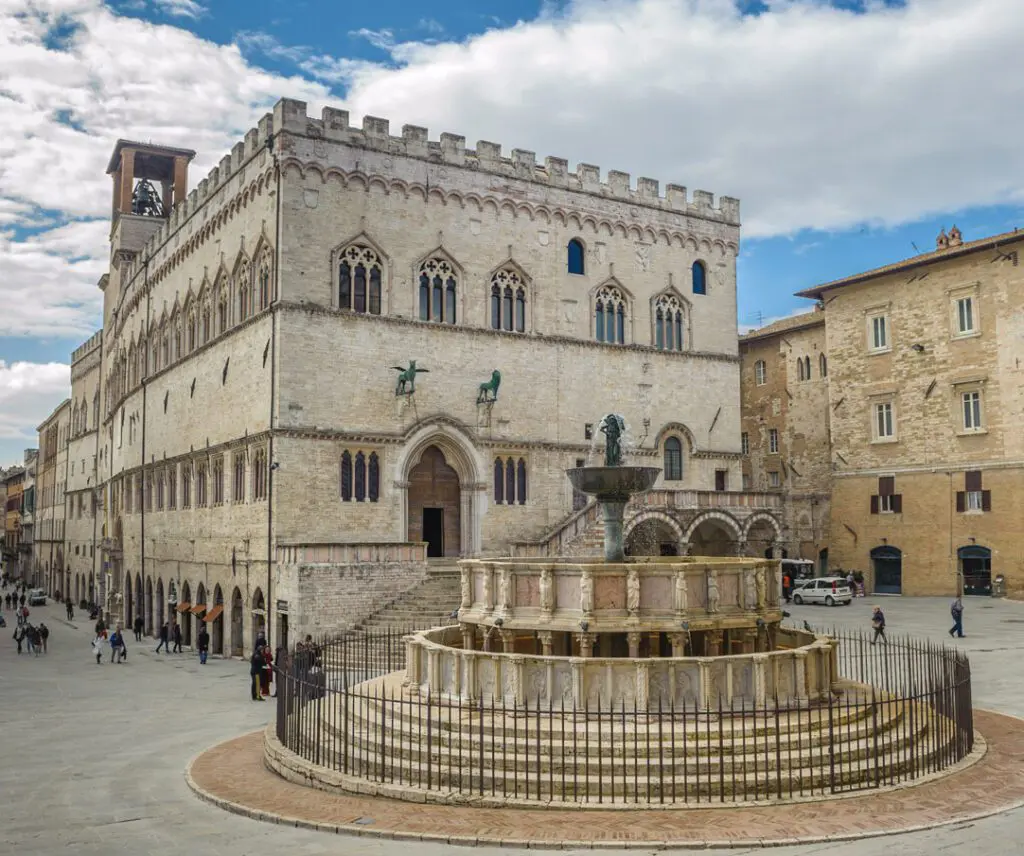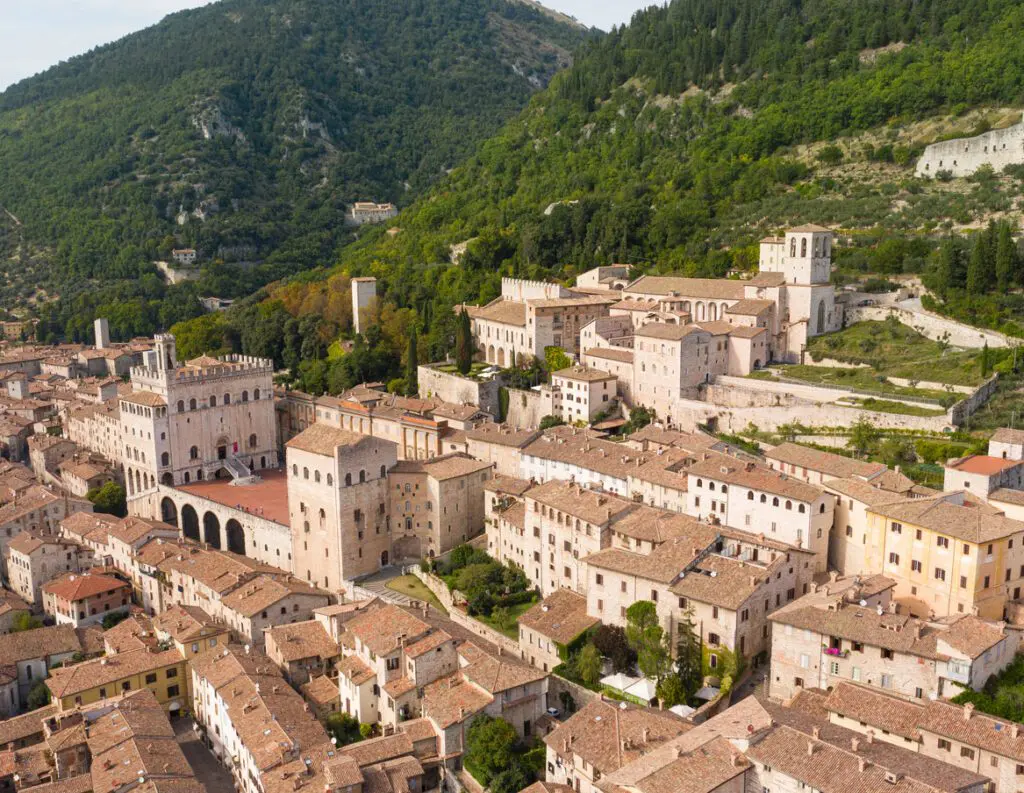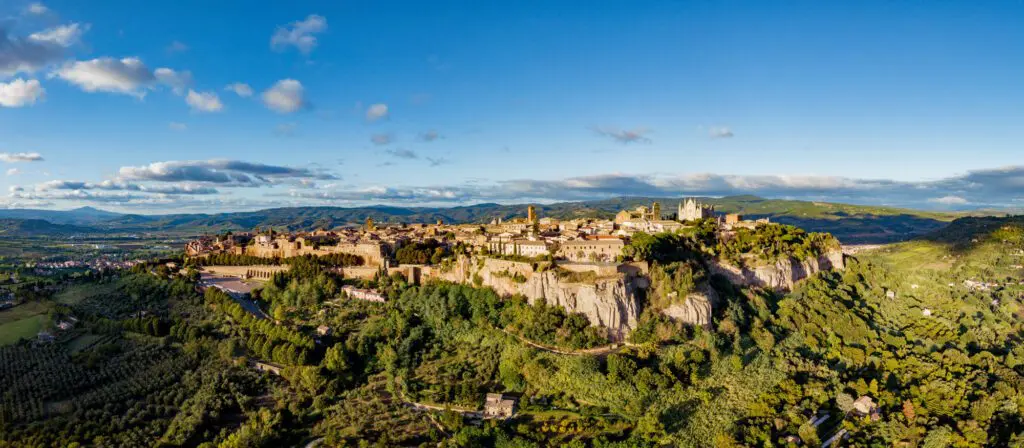A Stronghold to Guard Assisi
So sings the Hymn of the Sentinels (Scolte) of Assisi, the town’s hymn:
The trumpet blares, the days ends already,
already the curfew song soars.
C’mon, sentinels, up to the towers,
O armed guardians, hey there!
Heads up, keep silent, and watch!
Heads up, sentinels, and watch!
The author of the text, dating back to the 14th century, has remained anonymous.
It is really impressive to try to imagine the shrill sound of the silver trumpets of the sentinels, when they called the citizens of Assisi back into the town walls for the night curfew. And surely, in that past era, the scolte (sentinels) would guard the town and its surroundings from the Citadel too, which has been overlooking Assisi, for more than eight hundred years.
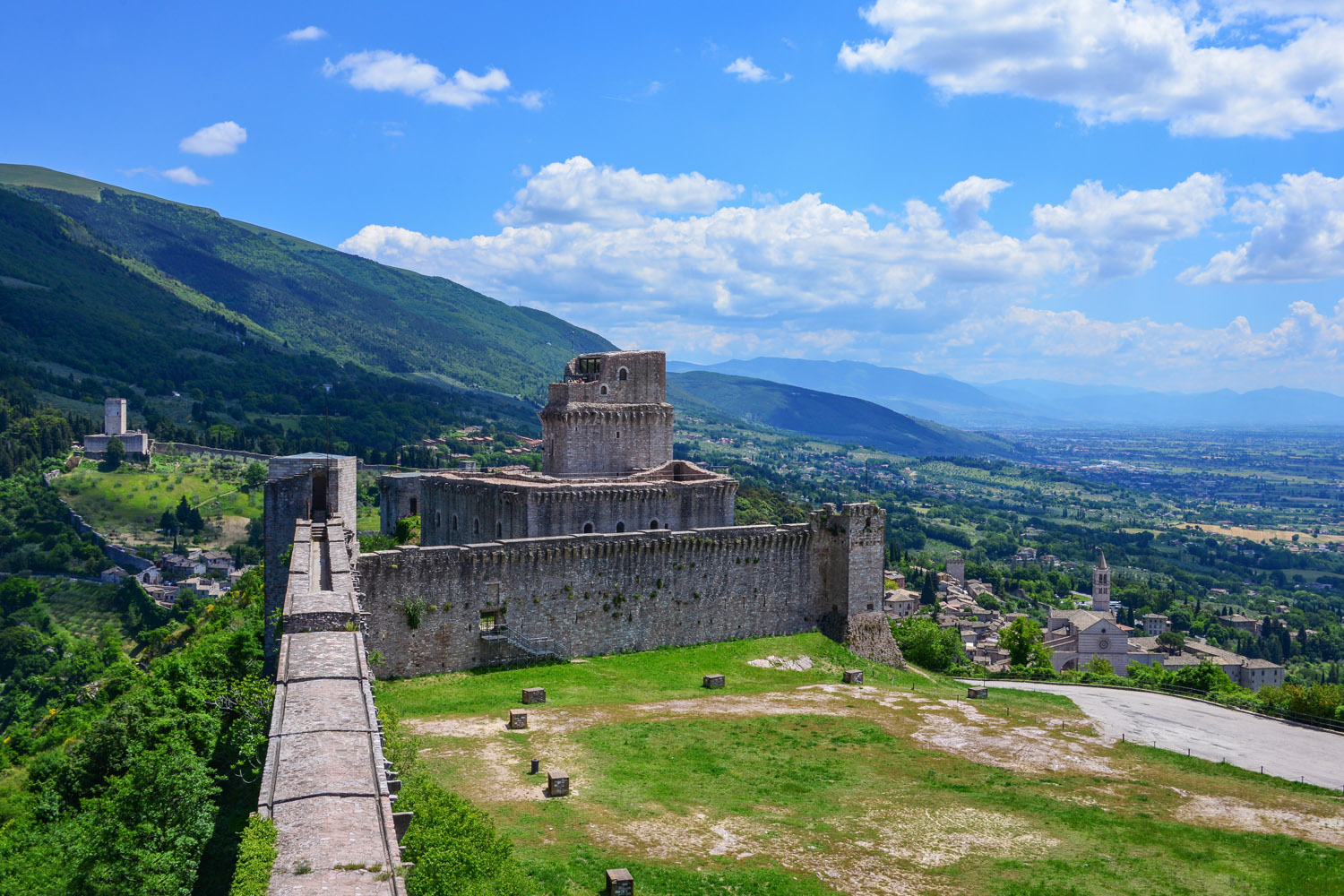
The Great and the Little Strongholds
The Assisi
Citadel is a fortified complex including two spaced-out architectural structures: the Great Stronghold (Rocca Maggiore) and the Little Stronghold (Rocca Minore, also known as Cassero di Sant’Antonio), both built in rosy stone, that is typical of Assisi.
The first pieces of information about the Citadel date back to 1173 or so. Later on, it would be described as a temporary seat for the future Emperor Frederick II of Swabia, then a little baby under the protection of the Duke of Spoleto. In 1198, however, a people’s revolt chased away both the Duke and 4 year-old Frederick, and heavily damaged the building.
About 1360, the stronghold was rebuilt by decision of Cardinal Egidio Albornoz, who had been appointed by Pope Innocent VI to consolidate the possessions of the Papal States.
So, while the Great Stronghold was rebuilt above the town of Assisi, so as to also guard the valley of Tescio River, the Little Stronghold would control the pass of Mount Subasio. Cardinal Albornoz decided, as well, to join the two strongholds into one military complex by means of a wall – it still snakes, partially hidden, among the houses in the quarter of Porta dei Cappuccini (Gates of the Capuchins).
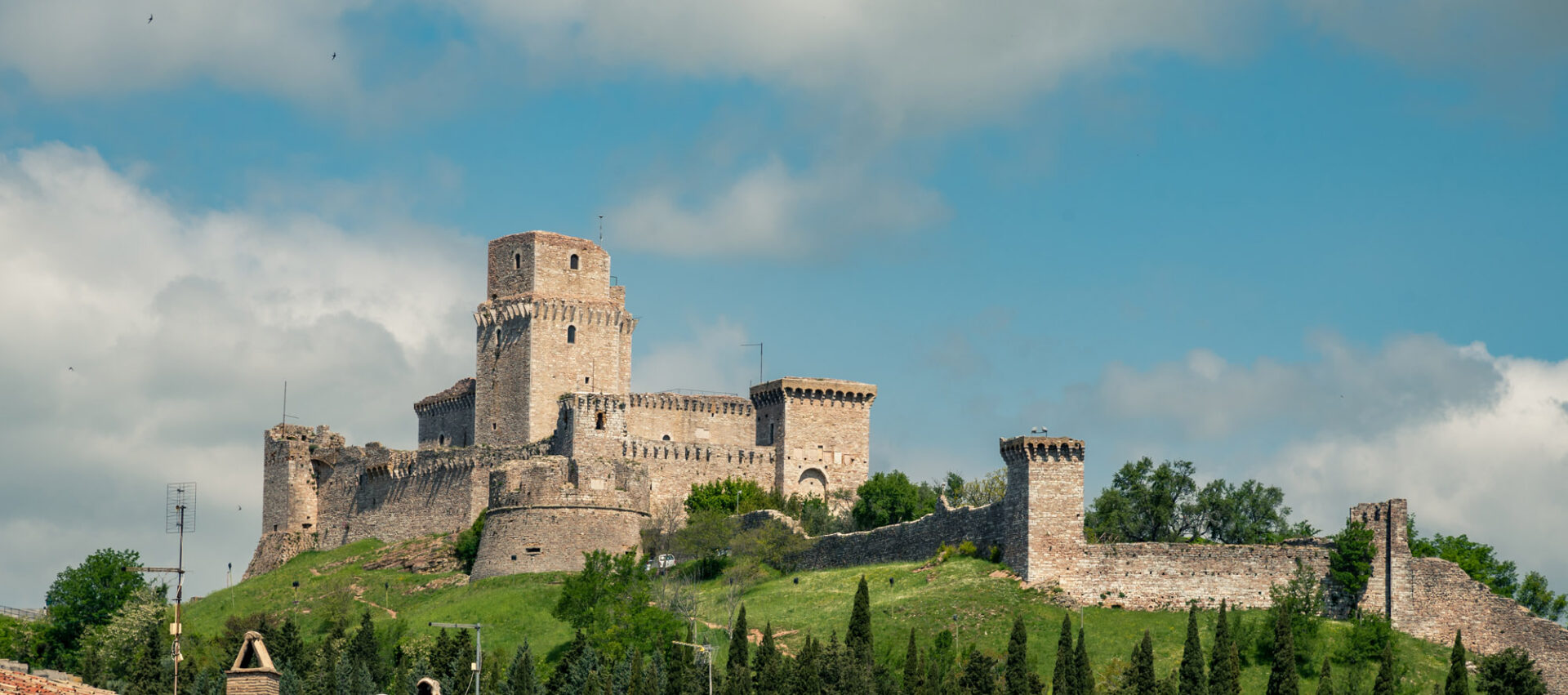
The Enlargement of the Great Stronghold
The Great Stronghold would undergo further enlargements. In 1348, Biordo Michelotti – who also was Lord of Perugia – ordered the consolidation of the fortress. In 1458 the North-West tower was built by decision of Jacopo Piccinino. Finally, in 1535 they added the round rampart; its gate still nowadays provides the access to the place.
Starting from the 16th century, the Assisi Citadel lose importance from a military viewpoint while taking on, first, a political role as the residence of authorities, then a quite different social role, namely as the town jail.
Outside the Great Stronghold there stretches an open space whence you will be able toadmire Assisi, from above, along with the whole valley below and, in the distance, the hills on which the town of Perugia rises. The view is breathtaking especially at sunrise and sunset, when the green Umbrian countryside is recolored in warm tones.
